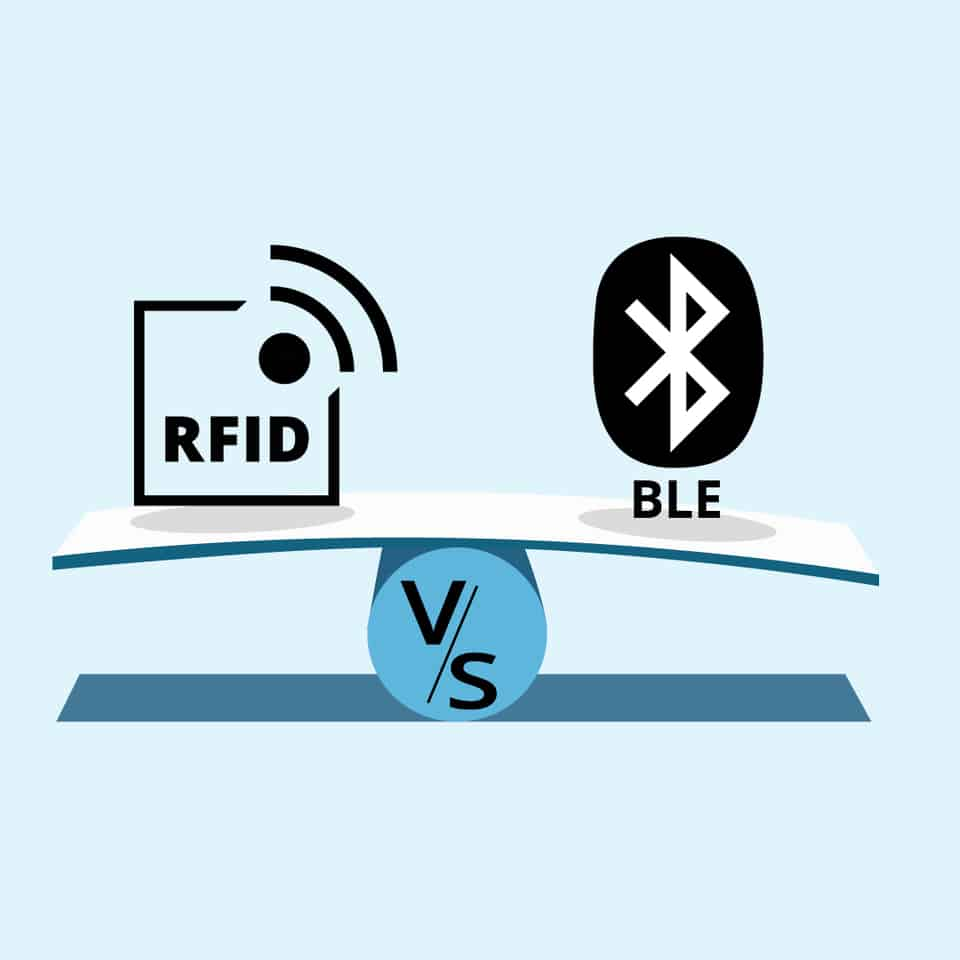RFID vs. BLE: How do they differ and how do they work together?
Find out more about RFID and BLE wireless technologies and how a variety of sectors are putting their combined power to use to optimize their operations.

RFID and BLE technology
In an era dominated by digital transformation, two wireless technologies, Radio-Frequency Identification (RFID) and Bluetooth Low Energy (BLE), have emerged as pioneers, reshaping the landscape of connectivity.
Both have their individual strengths and, when combined, they can create innovative solutions that enhance efficiency, accuracy and connectivity, revolutionizing the way that a diverse range of organisations monitor, manage and optimize their operations. Here we explore both technologies in more detail and look at their use in various sectors.
What is Radio-Frequency Identification (RFID)?
RFID is a wireless technology that uses radio waves to transfer data between a reader and a tag. The tags, which can be passive or active, contain unique identification information. Passive tags draw power from the reader, while active tags have their own power source. RFID provides real-time visibility through touchless scanning and is especially useful in scenarios where traditional barcodes or QR codes cannot be used or might be impractical.
What is Bluetooth Low Energy (BLE)?
BLE is a wireless communication standard designed for short-range communication between devices, and its energy efficiency makes it suitable for battery-operated devices like asset flow trackers and smart home devices. BLE is recognized for its balance between power consumption and data transfer speed, and is widely used in scenarios where continuous data exchange with low energy consumption is essential.
How do the two technologies differ?
Passive RFID excels in contactless identification and rapid data transfer, making it valuable for inventory management and supply chain tracking. It operates over short distances and is often used for broad-scale applications, such as retail tracking and inventory management.
In contrast, BLE is energy-efficient, designed for long-range communication and can be read by PDAs and smartphones, meaning that specialist equipment isn’t required. It is well-suited for applications requiring location determination and tracking of assets and continuous data exchange with low power consumption.
How do they work together?
While RFID and BLE each have their distinctive applications, combining the two technologies unlocks a host of new possibilities, enabling you to create solutions that leverage the advantages of each. This blended approach can be used to overcome business challenges that neither technology could overcome independently.
Examples of RFID & BLE in action
In the supply chain
Using both RFID and BLE enhances visibility throughout the supply chain process, with the real-time tracking of goods allowing for better demand forecasting, minimizing stockouts and overstock situations. The data collected from RFID and BLE devices can then be processed, providing analytics that allow businesses to identify trends, optimize routes and make data-driven decisions to enhance overall supply chain performance.
In healthcare
Using RFID for asset tracking, along with BLE for proximity sensing, enhances real-time visibility and provides precise location-based information. This is particularly useful in industries such as healthcare, where the tracking of medical equipment supports patient safety, improves patient flow and ensures that regulatory compliance requirements are being met.
In postal & parcels
The postal sector benefits from the combined technology by using RFID to enable both postal providers and customers to track and consign their parcels in real time, while the BLE element assists in operators being able to plan sorting and transport capacity for efficient execution based on actual and real-time data from transport assets, such as containers fitted with BLE tags. Likewise, BLE location information from asset locations outside the postal network helps operators balance volumes and stock used by their customers and partners.
In airports & airlines
As the airline industry embraces the digital age, the integration of RFID and BLE technologies contributes to a more efficient, passenger-friendly and technologically advanced travel experience. These technologies not only enhance operational efficiency, but also play a pivotal role in improving customer satisfaction by minimizing lost luggage, reducing bottlenecks and providing timely and relevant information throughout passengers’ journeys.
The future of RFID and BLE
As technology advances, the collaborative efforts between RFID and BLE will no doubt continue to evolve, offering even more sophisticated solutions for businesses seeking seamless and intelligent connectivity. As we have discovered, the integration of these technologies not only enhances efficiency and accuracy, but also provides solutions to challenges that were once beyond the reach of them individually. If you are in the market for Bluetooth Low Energy (BLE) and RFID tags for logistics optimization you may read more about the technologies at Lyngsoe Systems or contact us for more information.
Explore more articles